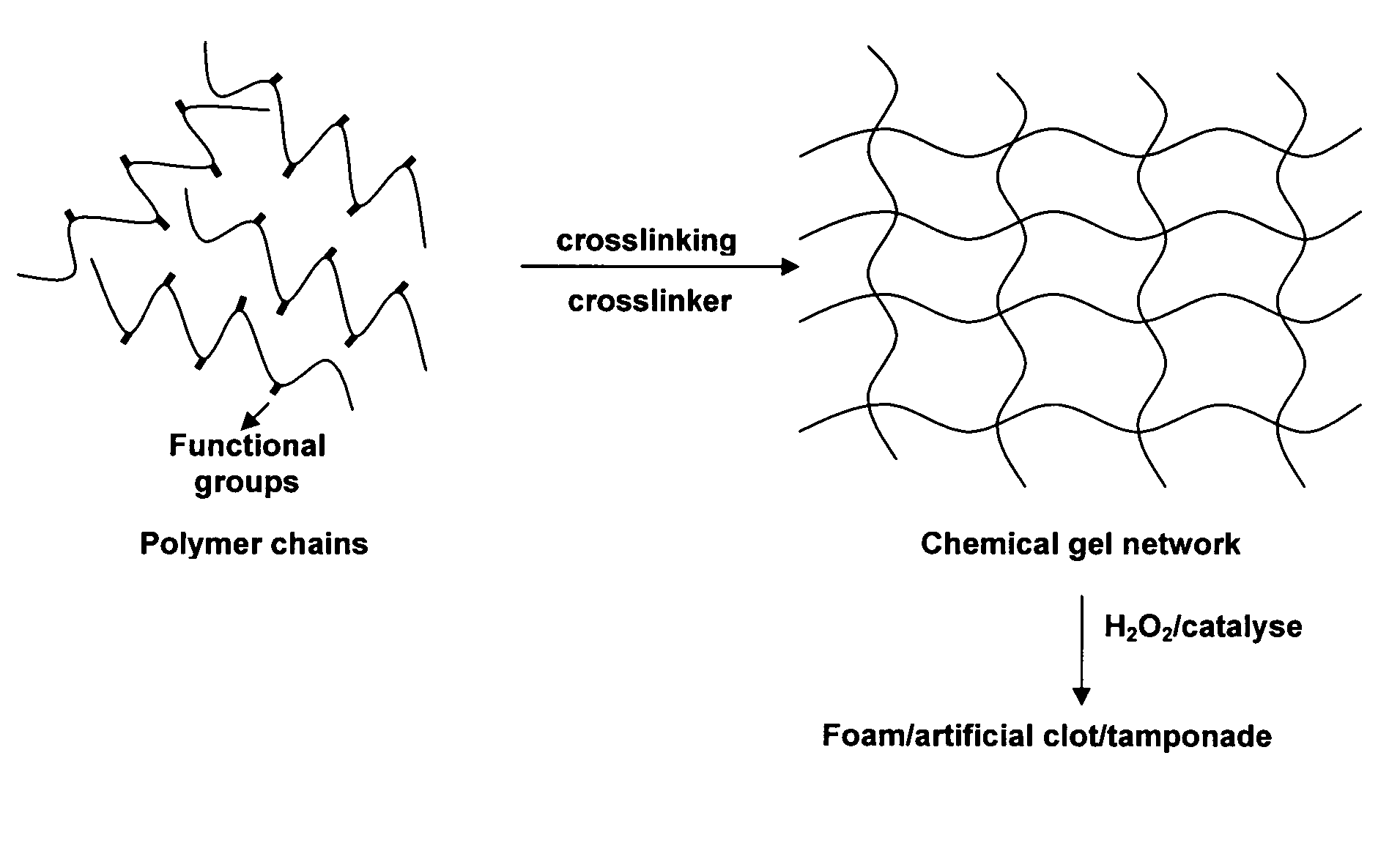Method and composition for in situ formation of an artificial blockage to control bleeding
a technology of in situ formation and artificial blockage, which is applied in the field of hemostatic compositions, can solve the problems of uncontrolled loss of blood, blood loss, and none rely on the interaction between catalase and hydrogen peroxide to drive, and achieve the effects of reducing, restricting, and/or arresting
- Summary
- Abstract
- Description
- Claims
- Application Information
AI Technical Summary
Benefits of technology
Problems solved by technology
Method used
Image
Examples
example 1
[0036]Solution A was prepared by mixing 1% solution of hydrogen peroxide with 5% solution of polyvinyl alcohol (Average M.W. 140000). Solution B was prepared by dissolving boric acid in water to form a 5% solution. Equal volume of solutions A and B were mixed in the presence of manganese dioxide in a glass beaker. Instantaneously, foam formed in copious amount and expanded to cover the entire volume of the beaker. A frame-by-frame photographic sequence of expansion of the composition is illustrated in FIG. 3.
example 2
[0037]The reaction in Example 1 was repeated with one exception. Human blood was substituted for manganese dioxide. Foam resulted immediately, expanding to cover the entire volume of the container. Photograph of the reaction product is shown in FIG. 4.
[0038]The composition of the present invention can be of any chemical or physical nature or properties, and may include any organic or inorganic substance or combination of substances.
[0039]The composition of the present invention may include a catalyst such as triethylenediamine (TEDA, also known as 1,4-diazabicyclo[2.2.2]octane or DABCO), dimethylcyclohexylamine (DMCHA), dimethylethanolamine (DMEA), tetramethylbutanediamine (TMBDA), pentamethyldipropylenetriamine, N-(3-dimethylaminopropyl)-N,N-diisopropanolamine, 1,3,5-(tris(3-dimethylamino)propyl)-hexahydro-s-triazine, bis-(2-dimethylaminoethyl)ether, N-ethylmorpholine, triethylamine(TEA), 1,8-diazabicyclo[5.4.0]undecene-7 (DBU), pentamethyldiethylenetriamine (PMDETA), benzyldimethy...
PUM
| Property | Measurement | Unit |
|---|---|---|
| concentration | aaaaa | aaaaa |
| volume | aaaaa | aaaaa |
| time | aaaaa | aaaaa |
Abstract
Description
Claims
Application Information
 Login to View More
Login to View More - R&D
- Intellectual Property
- Life Sciences
- Materials
- Tech Scout
- Unparalleled Data Quality
- Higher Quality Content
- 60% Fewer Hallucinations
Browse by: Latest US Patents, China's latest patents, Technical Efficacy Thesaurus, Application Domain, Technology Topic, Popular Technical Reports.
© 2025 PatSnap. All rights reserved.Legal|Privacy policy|Modern Slavery Act Transparency Statement|Sitemap|About US| Contact US: help@patsnap.com



